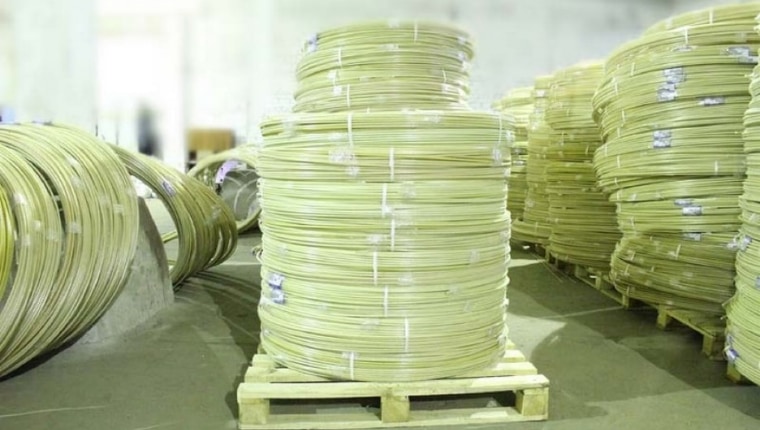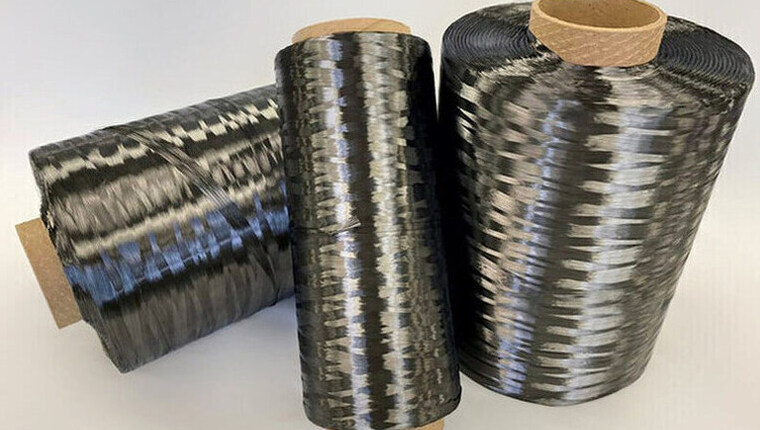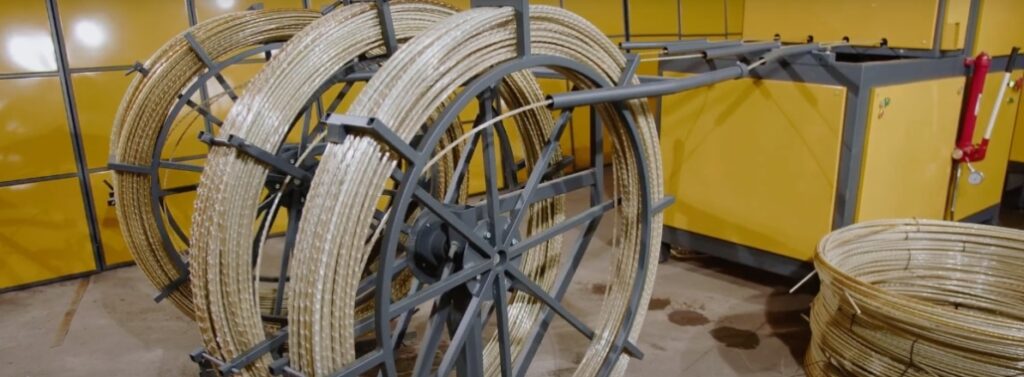Производството на композитна арматура, като нашата CT-R-BAR, изисква висококачествени суровини, за да се осигури максимална здравина и издръжливост. В тази статия ще разгледаме по-отблизо различните видове стъклени влакна и базалтови влакна, както и свойствата на епоксидните и полиестерните смоли. Ще обсъдим и други влакна, които могат да се използват в производството на арматура и ще прегледаме текущите тенденции на пазара на суровини.
Съдържание
Основни материали, използвани при производството на композитна арматура
Стъклени влакна
Стъклените влакна са един от основните материали, използвани в производството на композитна арматура. Притежава висока якост и устойчивост на корозия. Стъклените влакна са разделени на няколко типа, включително E-стъкло, S-стъкло и AR-стъкло. Всеки от тези видове има свои уникални свойства:
Е-стъкло: Този тип стъклени влакна има отлични електрически и механични свойства, което го прави най-често срещаният избор за производство на арматура.
S-стъкло: Има по-висока якост и термична устойчивост в сравнение с E-стъклото, което го прави идеален за приложения с високо напрежение.
AR-стъкло: Осигурява повишена алкална устойчивост, което е важно при използване в агресивни химически среди.


Базалтово влакно
Базалтовото влакно е алтернатива на стъкленото влакно и има няколко предимства, като висока якост, устойчивост на високи температури и устойчивост на корозия. Базалтовото влакно е направено от естествен базалт и има следните характеристики:
Висока якост на опън: До 4800 MPa, което го прави отличен избор за армиране на бетон.
Термична устойчивост: Издържа на температури до 1000°C, без да губи свойствата си.
Екологичност: Изработен от естествен материал и не съдържа вредни химикали.


Други влакна
Освен стъклени влакна и базалтово влакнодруги влакна могат да се използват в производството на композитна арматура, като въглеродни влакна и арамидни влакна:
- Въглеродни влакна: Има изключителна здравина и твърдост, но е значително по-скъп в сравнение с други влакна.
- Арамидни влакна: Известен с високата си устойчивост на удар и абразия, но има и по-висока цена.
Епоксидна и полиестерна смола
Висококачествените смоли също са необходими за производството на композитна арматура. Най-често се използват епоксидни и полиестерни смоли:
- Епоксидна смола: Има отлична адхезия към влакната, висока механична якост и химическа устойчивост. Осигурява издръжливостта и надеждността на арматурата.
- Полиестерна смола: По-достъпен и лесен за използване, но неговите механични свойства и химическа устойчивост са малко по-ниски в сравнение с епоксидната смола.


Икономически ползи от композитна арматура
Напоследък цената на суровините за производство на композитна арматура значително намаля. Това прави бизнеса с производство на арматура изключително печеливш. Например цената на стъклените влакна е спаднала с 20% през последната година, а цената на епоксидната смола е намаляла с 15%. Тези промени позволяват намаляване производствени разходи и повишена доходност.
Специфични характеристики
За да разберете качеството и да изберете правилните суровини, е важно да вземете предвид специфичните характеристики на ровинга и смолата:
- Стъклени влакна (E-стъкло): Якост на опън – до 3450 MPa, модул на еластичност – 73 GPa.
- Базалтово влакно: Якост на опън – до 4800 MPa, модул на еластичност – 89 GPa.
- Епоксидна смола: Якост на опън – 80-120 MPa, модул на еластичност – 2,5-4 GPa.
- Полиестерна смола: Якост на опън – 40-90 MPa, модул на еластичност – 2-3,5 GPa.
Заключение
Изборът на висококачествени суровини за производството на композитна арматура е ключов фактор за осигуряване на нейната здравина и издръжливост. В момента спадът в цените на суровините отваря нови възможности за увеличаване на рентабилността на бизнеса. Надяваме се това ръководство да ви помогне да разберете по-добре различните материали и техните свойства, за да направите правилния избор за вашето производство.
За по-подробна информация относно нашето оборудване и продукти, като CT-R-BAR, посетете нашия уебсайт на адрес composite-tech.com.

